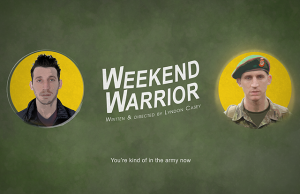
Running more than one crowdfunding campaign
This week, our crowdfunding series will focus on filmmakers who found success on their first campaign and have decided to run a second. Today’s guest post is from Toronto-based filmmaker Shasha Nakhai of Compy Films.
My experience with crowd-funding began with the first film I directed, a 20 minute documentary called THE SUGAR BOWL. The film’s bare bones budget was about $10,000, but I only had about $6,000 raised at the time. In order to make the film happen, I knew I had to raise more money. Being a first-time filmmaker, my options were very limited. I heard about IndieGoGo when I came across another film’s campaign and decided to try it out myself. I set a low goal of $3,000 and ran the campaign on my own. I not only met the goal, but exceeded it raising $3,265 and an additional $1,000 outside of the campaign.
This initial campaign was run during a time when there wasn’t yet a wealth of information available on how to run a successful campaign and I found it very challenging and more of an experiment just to see what would happne. I chose IndieGoGo simply because I live in Canada, and at that time Kickstarter required a US bank account.
I think the main reason behind my project’s success was the subject matter, the personal connection I had to the story and the fact that there was a real lack of films coming from the Philippines. I also had a strong pitch video, even though it was very simple. It was a video of me pitching the film at the Pitch Competition, but my passion for the project really shone through.
The Sugar Bowl – Teaser Trailer from Rich Williamson on Vimeo.
The #1 thing I learned from running a crowd-funding campaign was that I had to leave my pride at the door. You can’t be afraid to ask for things, otherwise you won’t get them! Also, framing what you are asking for is so important. The way you talk about your campaign to others makes a huge difference. For instance, using words like “join us,” “support,” “back,” and “pre-buy” instead of “donate” actually makes a psychological difference. It becomes more about an exchange rather than simply begging for money.
It is also important to have a team to work together on a campaign. It is mentally exhausting to take on a campaign by yourself and I was running myself into the ground trying to plan the trip to the Philippines while at the same time running a 24/7 crowd-funding campaign.
I would say the biggest mistake I made during my campaign was not accounting for the fact that the funds being raised were in USD, not CAD, and that there would be additional wire transfer and conversion costs on top of IndieGoGo’s interest. Another flaw was my lack of updates. If I were to run this campaign today, I would set a higher goal, bring on board a team and be more consistent with social media and updates.
Which brings me now to the campaign I am running today.
Right now I’m producing a short comedy called WEEKEND WARRIOR, directed by Lyndon Casey. Before we started the campaign, I identified my biggest assets. We have assembled an experienced team with strong resumes; the director’s last short film [Captain Coulier (space explorer)] premiered at Sundance 2009; and one of our actors, Dillon Casey, has 20,000 followers on Twitter. Taking all of these into consideration, we decided to set a goal of $15,000, which we are still actively fundraising.
One major advantage we have is being able to tap into already existing mailing lists and social media followers from all of our previous films. Each member of the team is building on their already-existing networks as we move along and we will continue to build on and engage our audiences all the way into production, through to distribution. We’re now creating weekly skits or update videos and actively seeking out media coverage and guest blog opportunities such as this one to keep up momentum.
One important thing we were really missing was a graphic designer on the team. Our most popular perk to date is the only one that has a picture. I realized people are probably not going to be interested in purchasing a tote if they have no idea what it looks like. So to remedy this mid-campaign, we paid a graphic designer to create a tote that people would want regardless of whether it was supporting our film or not. That’s one very important thing remember –assess your campaign along the way to evaluate what is and is not working. Change what you can.
Regardless of the fact that I’ve already run one successful crowd-funding campaign, we’re still finding this one challenging. Perhaps it’s timing – it’s Movember, a typhoon just hit the Philippines, and people are saving for Christmas. Or maybe this kind of film just isn’t for everyone. Whatever it is, we’re confident we’ll be able to overcome it if we continue pushing the project out to wider networks. We’ve got an audience out there and we’re going to find them!
Shasha Nakhai is a filmmaker based in Toronto, Canada with Compy Films. Her award-winning short films have screened at festivals worldwide including the Hot Docs, DC Shorts, LA Shorts, Atlanta, and Aljazeera Film Festivals. Most notably, The Sugar Bowl won Best Film and Best Documentary at the Aesthetica Film Festival, the WIFT-T Award at the Toronto Reel Asian International Film Festival, and was nominated for the Aljazeera Film Festival’s Gold Award. The Sugar Bowl and Joe recently aired in the United States and Europe on ShortsTV and will be released on iTunes later this year.
Sheri Candler November 18th, 2013
Posted In: crowdfunding
Tags: Canada, Captain Coulier, Compy Films, crowdfunding, Dillon Casey, funding goal, indiegogo, Lyndon Casey, Shasha Nakhai, The Sugar Bowl, Toronto, Weekend Warrior
